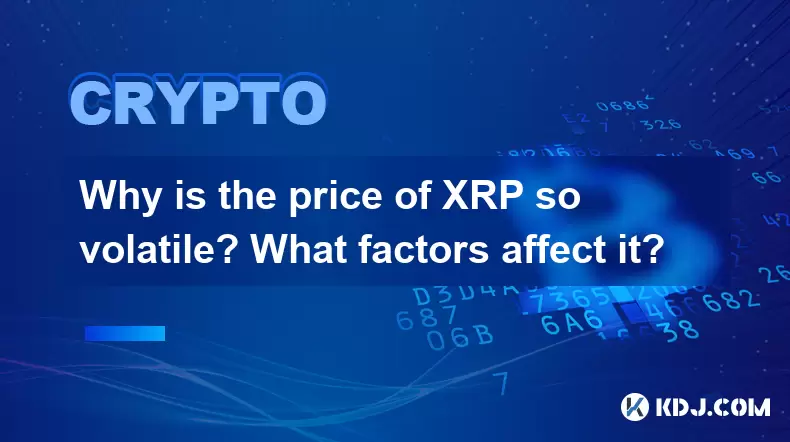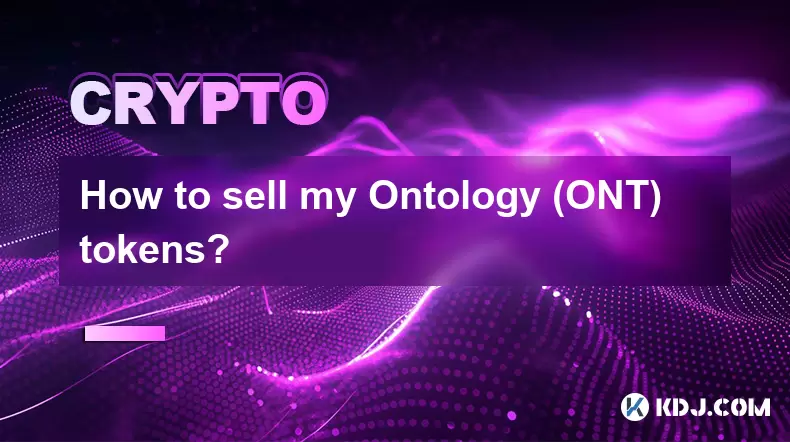-
 Bitcoin
Bitcoin $116900
0.00% -
 Ethereum
Ethereum $4280
5.48% -
 XRP
XRP $3.265
-1.45% -
 Tether USDt
Tether USDt $1.000
-0.01% -
 BNB
BNB $807.0
1.41% -
 Solana
Solana $183.1
2.93% -
 USDC
USDC $0.9999
0.00% -
 Dogecoin
Dogecoin $0.2440
6.50% -
 TRON
TRON $0.3357
-0.88% -
 Cardano
Cardano $0.8178
2.63% -
 Hyperliquid
Hyperliquid $44.13
7.45% -
 Chainlink
Chainlink $21.39
9.09% -
 Stellar
Stellar $0.4524
-0.84% -
 Sui
Sui $3.957
2.13% -
 Bitcoin Cash
Bitcoin Cash $572.7
-2.54% -
 Hedera
Hedera $0.2671
1.54% -
 Avalanche
Avalanche $24.77
4.17% -
 Ethena USDe
Ethena USDe $1.001
0.02% -
 Litecoin
Litecoin $122.3
-1.94% -
 Toncoin
Toncoin $3.432
2.26% -
 UNUS SED LEO
UNUS SED LEO $9.007
0.49% -
 Shiba Inu
Shiba Inu $0.00001396
5.26% -
 Uniswap
Uniswap $11.09
1.64% -
 Polkadot
Polkadot $4.155
4.57% -
 Dai
Dai $1.000
0.00% -
 Pepe
Pepe $0.00001253
5.11% -
 Cronos
Cronos $0.1588
2.67% -
 Bitget Token
Bitget Token $4.512
0.05% -
 Monero
Monero $275.0
0.64% -
 Ethena
Ethena $0.7527
15.10%
Why is the price of XRP so volatile? What factors affect it?
XRP's price volatility is influenced by demand and supply, regulatory news, market sentiment, technological upgrades, competition, macroeconomic factors, and trading liquidity.
May 10, 2025 at 01:43 am

The price of XRP, like many cryptocurrencies, is subject to high volatility. This means that its price can experience significant fluctuations within short periods. Several factors contribute to this volatility, and understanding these can help investors and enthusiasts better navigate the market. In this article, we will explore the reasons behind XRP's price volatility and the various factors that influence it.
Market Demand and Supply
The fundamental principle of economics, demand and supply, plays a crucial role in determining XRP's price. When there is a high demand for XRP and the supply is limited, the price tends to increase. Conversely, if the demand decreases or the supply increases, the price can drop. The cryptocurrency market, including XRP, is highly sensitive to these dynamics.
Market demand for XRP can be influenced by various factors such as investor sentiment, adoption by financial institutions, and its use in cross-border payments. For instance, if a major bank announces that it will use XRP for its international transactions, this can lead to a surge in demand and subsequently increase the price. On the other hand, negative news or regulatory concerns can lead to a drop in demand, causing the price to fall.
Regulatory News and Developments
Regulatory news and developments have a significant impact on XRP's price volatility. The cryptocurrency industry is still relatively new and is subject to evolving regulations. Any news related to regulatory changes, especially in major markets like the United States, can cause significant price swings.
For example, in December 2020, the U.S. Securities and Exchange Commission (SEC) filed a lawsuit against Ripple Labs, the company behind XRP, alleging that XRP was an unregistered security. This news led to a sharp decline in XRP's price as investors became uncertain about its future. Conversely, positive regulatory developments, such as a country legalizing or supporting cryptocurrencies, can lead to price increases.
Market Sentiment and Speculation
Market sentiment and speculation are also key drivers of XRP's price volatility. The cryptocurrency market is heavily influenced by the emotions and perceptions of investors. Positive news, such as partnerships or technological advancements, can create a bullish sentiment, driving the price up. Conversely, negative news or rumors can lead to a bearish sentiment, causing the price to drop.
Speculation is another factor that contributes to volatility. Many investors buy and sell XRP based on short-term price movements rather than long-term fundamentals. This speculative trading can lead to rapid price changes, especially in a market with high liquidity like XRP.
Technological Developments and Upgrades
Technological developments and upgrades within the XRP Ledger can also affect its price. The XRP Ledger is the underlying technology that powers XRP, and any improvements or updates to this technology can influence investor confidence and, consequently, the price.
For instance, if Ripple Labs announces a new feature that enhances the speed or security of XRP transactions, this can lead to increased demand and a higher price. Conversely, if there are delays or issues with the technology, this can lead to a loss of confidence and a drop in price.
Competition and Market Position
Competition within the cryptocurrency market and XRP's position relative to other cryptocurrencies also play a role in its price volatility. XRP faces competition from other cryptocurrencies that offer similar functionalities, such as Stellar (XLM) and Ethereum (ETH). The performance and developments of these competing cryptocurrencies can impact XRP's price.
If a competing cryptocurrency gains significant traction or announces a major partnership, this can lead to a shift in investor interest away from XRP, causing its price to drop. Conversely, if XRP is seen as outperforming its competitors or gaining more adoption, this can lead to a price increase.
Macroeconomic Factors
Macroeconomic factors, such as inflation rates, interest rates, and economic stability, can also influence XRP's price. The cryptocurrency market is not isolated from the broader economic environment, and changes in macroeconomic conditions can affect investor behavior and market dynamics.
For example, during times of economic uncertainty or high inflation, investors may turn to cryptocurrencies like XRP as a hedge against traditional financial assets. This increased demand can drive up the price. Conversely, if the economy is stable and interest rates are favorable, investors may prefer traditional investments, leading to a decrease in demand for XRP and a drop in its price.
Trading Volume and Liquidity
Trading volume and liquidity are additional factors that contribute to XRP's price volatility. High trading volume indicates a high level of interest and activity in the market, which can lead to more significant price movements. Conversely, low trading volume can result in less volatility but also less liquidity, making it harder to buy or sell large amounts of XRP without affecting the price.
Liquidity refers to the ease with which XRP can be bought or sold without causing a significant change in its price. High liquidity means that there are many buyers and sellers in the market, which can help stabilize the price. However, even with high liquidity, rapid changes in market sentiment can still lead to significant price swings.
Frequently Asked Questions
Q: How can I protect my investments from XRP's volatility?
A: To protect your investments from XRP's volatility, consider diversifying your portfolio across different cryptocurrencies and traditional assets. Additionally, setting stop-loss orders can help limit potential losses, and staying informed about market news and developments can help you make more informed trading decisions.
Q: Is XRP more volatile than other cryptocurrencies?
A: XRP's volatility can vary compared to other cryptocurrencies. While it is known for its high volatility, other cryptocurrencies like Bitcoin and Ethereum can also experience significant price swings. The level of volatility can depend on various factors, including market conditions and specific news related to each cryptocurrency.
Q: Can XRP's volatility be predicted?
A: Predicting XRP's volatility with certainty is challenging due to the many factors that influence its price. However, by staying informed about market trends, regulatory news, and technological developments, you can gain a better understanding of potential price movements. Technical analysis and market sentiment analysis can also provide insights into possible future volatility.
Q: How does XRP's volatility affect its use in cross-border payments?
A: XRP's volatility can impact its use in cross-border payments by introducing uncertainty in transaction costs. If the price of XRP fluctuates significantly during the time it takes to complete a transaction, the cost of the transaction can vary. However, Ripple's technology aims to mitigate this by using XRP as a bridge currency, which can help reduce the impact of volatility on the final transaction cost.
Disclaimer:info@kdj.com
The information provided is not trading advice. kdj.com does not assume any responsibility for any investments made based on the information provided in this article. Cryptocurrencies are highly volatile and it is highly recommended that you invest with caution after thorough research!
If you believe that the content used on this website infringes your copyright, please contact us immediately (info@kdj.com) and we will delete it promptly.
- XRP Price, Remittix, and Ripple Rivals: A Crypto Cocktail
- 2025-08-10 10:50:16
- Live Crypto Updates, August 10: ETH Soars, Trump's Crypto Play, and More!
- 2025-08-10 11:30:16
- Riding the Wave: Ethereum, DeFi, and the Liquid Staking Derivatives (LSDs) Surge
- 2025-08-10 10:30:15
- Strobe Ventures, ENA Tokens, and the Surge: What's the Deal?
- 2025-08-10 10:35:15
- Shiba Inu, Pepe, and Remittix: A Tale of Memes, Hype, and Real-World Utility
- 2025-08-10 08:30:12
- Ethereum Price, ETH Tokens, Rally Prediction: Is a New All-Time High In Sight?
- 2025-08-10 08:30:12
Related knowledge

How to purchase Aragon (ANT)?
Aug 09,2025 at 11:56pm
Understanding Aragon (ANT) and Its PurposeAragon (ANT) is a decentralized governance token that powers the Aragon Network, a platform built on the Eth...

Where can I buy UMA (UMA)?
Aug 07,2025 at 06:42pm
Understanding UMA and Its Role in Decentralized FinanceUMA (Universal Market Access) is an Ethereum-based decentralized finance (DeFi) protocol design...

How to buy Storj (STORJ) tokens?
Aug 09,2025 at 07:28am
Understanding Storj (STORJ) and Its Role in Decentralized StorageStorj is a decentralized cloud storage platform that leverages blockchain technology ...

What is the best app to buy Nano (NANO)?
Aug 09,2025 at 03:35am
Understanding Nano (NANO) and Its Unique FeaturesNano is a feeless, instant cryptocurrency designed for fast peer-to-peer transactions. Unlike many ot...

Where can I purchase Siacoin (SC)?
Aug 08,2025 at 11:14am
Understanding Siacoin (SC) and Its Role in the Sia NetworkSiacoin (SC) is the native cryptocurrency of the Sia decentralized cloud storage platform, a...

How to sell my Ontology (ONT) tokens?
Aug 09,2025 at 06:08pm
Understanding Ontology (ONT) and Its Trading EcosystemBefore selling your Ontology (ONT) tokens, it's essential to understand the nature of the crypto...

How to purchase Aragon (ANT)?
Aug 09,2025 at 11:56pm
Understanding Aragon (ANT) and Its PurposeAragon (ANT) is a decentralized governance token that powers the Aragon Network, a platform built on the Eth...

Where can I buy UMA (UMA)?
Aug 07,2025 at 06:42pm
Understanding UMA and Its Role in Decentralized FinanceUMA (Universal Market Access) is an Ethereum-based decentralized finance (DeFi) protocol design...

How to buy Storj (STORJ) tokens?
Aug 09,2025 at 07:28am
Understanding Storj (STORJ) and Its Role in Decentralized StorageStorj is a decentralized cloud storage platform that leverages blockchain technology ...

What is the best app to buy Nano (NANO)?
Aug 09,2025 at 03:35am
Understanding Nano (NANO) and Its Unique FeaturesNano is a feeless, instant cryptocurrency designed for fast peer-to-peer transactions. Unlike many ot...

Where can I purchase Siacoin (SC)?
Aug 08,2025 at 11:14am
Understanding Siacoin (SC) and Its Role in the Sia NetworkSiacoin (SC) is the native cryptocurrency of the Sia decentralized cloud storage platform, a...

How to sell my Ontology (ONT) tokens?
Aug 09,2025 at 06:08pm
Understanding Ontology (ONT) and Its Trading EcosystemBefore selling your Ontology (ONT) tokens, it's essential to understand the nature of the crypto...
See all articles

























































































